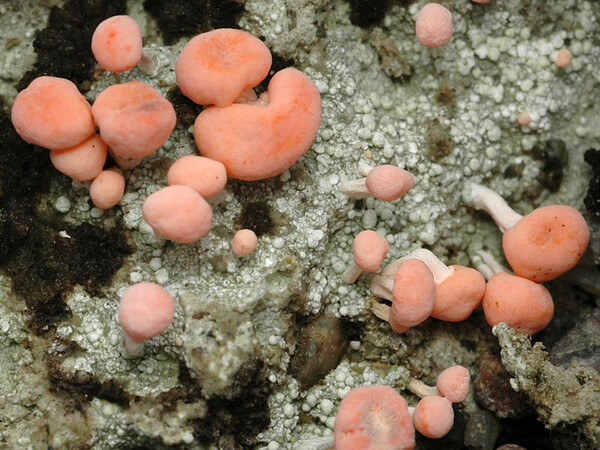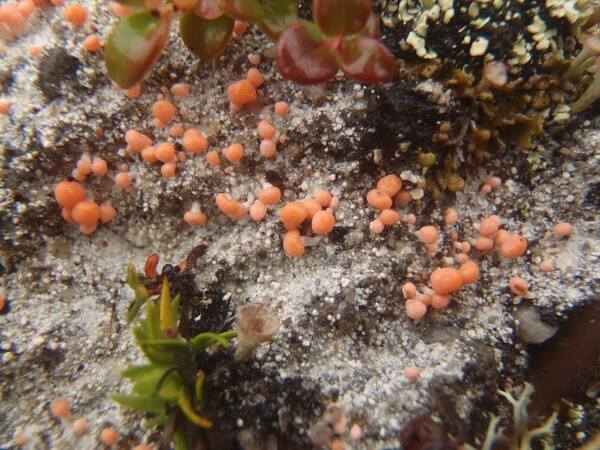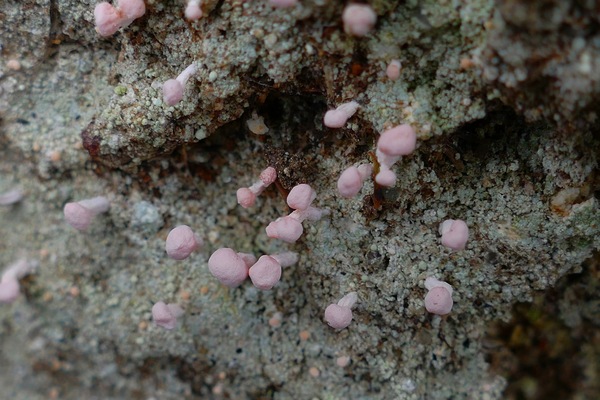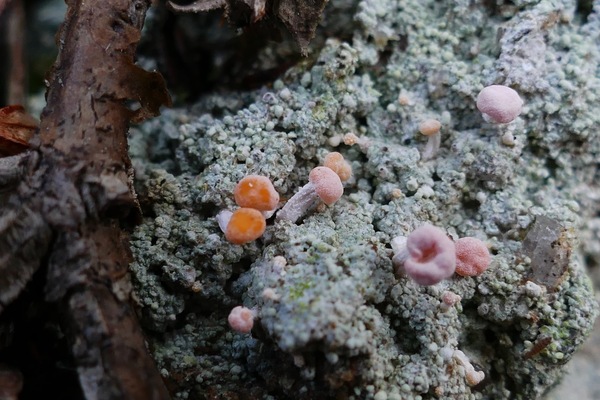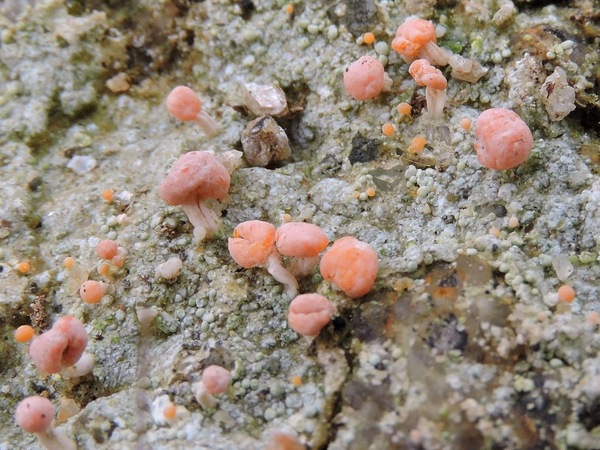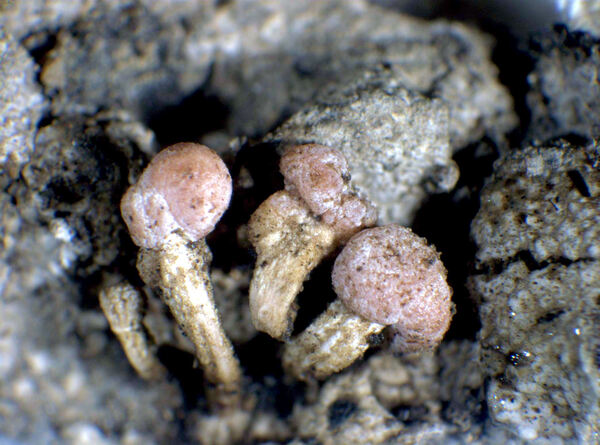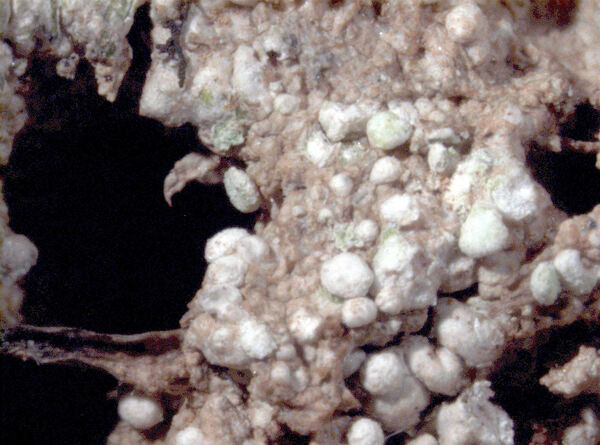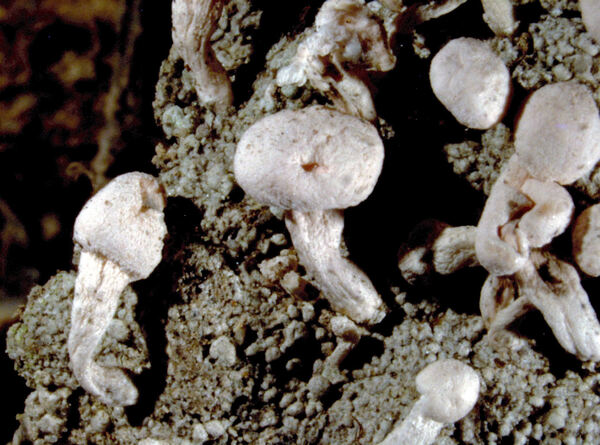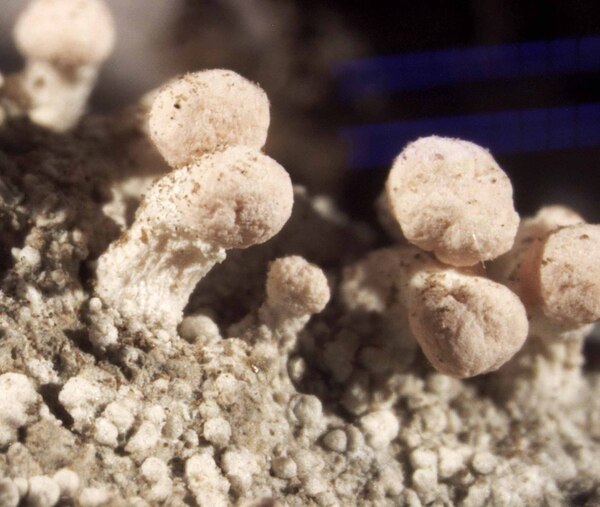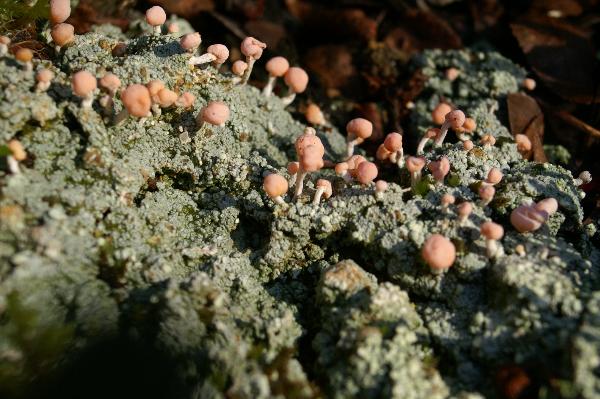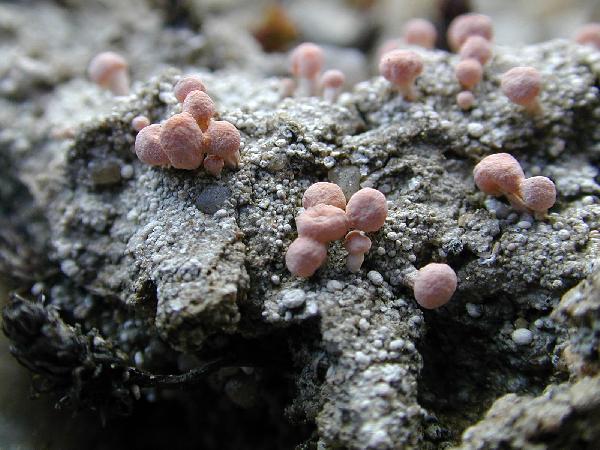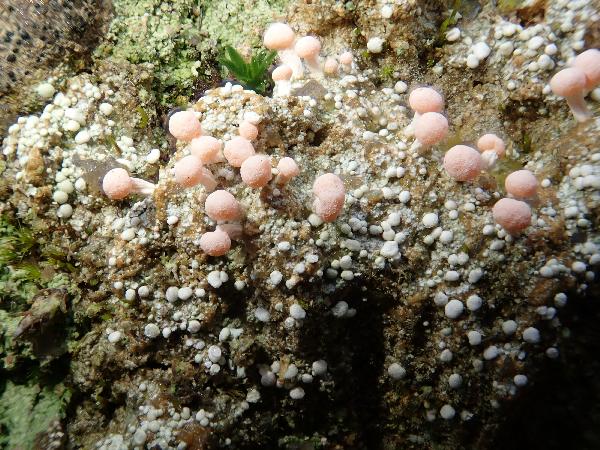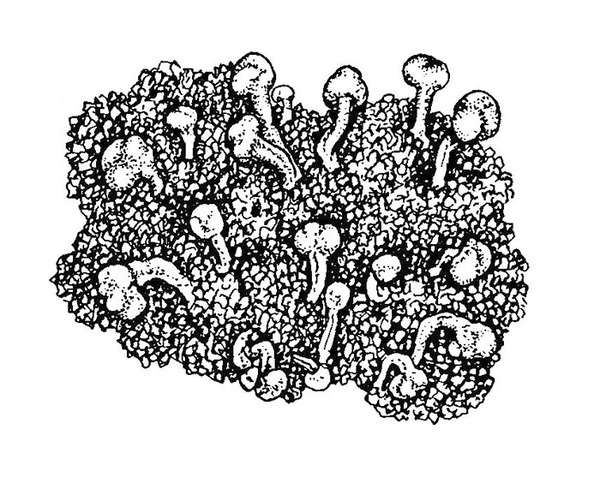Dibaeis baeomyces (L. f.) Rambold & Hertel
in Rambold & al., Bibl. Lichenol., 53: 231, 1993. Basionym: Lichen baeomyces L. f. - Suppl. Plant.: 450, 1781 (1782).
Synonyms: Baeomyces roseus f. abortivus A. Massal.; Baeomyces roseus Pers.; Dibaeis rosea (Pers.) Clem.
Distribution: N - VG, Frl (Tretiach & Hafellner 2000), Ven (Lazzarin 2000b), TAA (Caniglia & al. 2002, Nascimbene 2008b, Bilovitz & al. 2014, Nascimbene & al. 2022), Lomb (Dalle Vedove & al. 2004, Gheza 2018, 2019b), Piem (Isocrono & al. 2004, Isocrono & Piervittori 2008, Gheza 2020), VA (Borlandelli & al. 1996, Piervittori & Isocrono 1997, 1999), Emil (Dalle Vedove & al. 2002, Fariselli & al. 2020, Lich. Ital. Exs. 63: Isocrono & al. 2022), Lig (Watson 2014). C - Tosc (Benesperi & al. 2007), Marc. S - Si.
Description: Primary thallus crustose, grey, white or very pale grey, thick, areolate, usually with soft, rounded, white to pinkish grey, more or less glossy, wart-like, rarely sorediate schizidia which are up to 1 mm wide in sterile thalli, 0.1-0.3 mm wide in fertile thalli. Cortex of thallus c. 50 µm thick, of thin-walled, vertically oriented hyphae; medulla very loose, paraplectenchymatous in parts; cortex of schizidia consisting of interwoven hyphae parallel to the surface; inner part of stalks with strands of thin-walled 2.5-3 µm thick hyphae, those under the hymenium up to 5 µm thick. Apothecia frequent, globose also when young, often hollow inside, pink, 1-4 mm wide, emarginate or with a narrow margin when young, brought on erect, subfruticose, smooth, ecorticate, white stipes (podetia) which are 2-5(-6) mm tall and to 3 mm wide. Proper exciple poorly developed, of radially arranged hyphae; epithecium with colourless crystals dissolving in K (present also in the hymenium); hymenium colourless, 100-120(-140) µm high, K/I+ blue (reaction ephemeral!); paraphyses simple, not anastomosing, 2-2.5 thick at mid-level, the apical cells only slightly wider; hypothecium colourless or yellowish in upper part. Asci 8-spored, thin walled, cylindrical, the walls and tip K/I+ blue, with a distinct ocular chamber in the tholus, Icmadophila-type. Ascospores 1-celled (some apparently 2-celled for the presence of a pseudo-septum), hyaline, fusiform, (10-)12-26 x 2-3 µm. Pycnidia 0.1-0.2 mm across, immersed in warts, mostly laminal, with a colourless wall (brownish near the ostiole), the conidiogenous cells catenate, barrel-shaped. Conidia pleurogenous, short-bacilliform, 3.5-5 x c. 1 µm. Photobiont chlorococcoid (Coccomyxa). Spot tests: thallus K+ yellow-orange, C-, KC+ orange, P+ yellow to orange, UV+ orange; medulla P+ yellow to orange, UV+ orange. Chemistry: baeomycesic acid, and variable amounts of squamatic and barbatic acids and atranorin.
Note: on humid, disturbed clay soil, often in Calluna-heaths, most frequent in upland areas. For further details see Gierl & Kalb (1993).
Growth form: Crustose
Substrata: soil, terricolous mosses, and plant debris
Photobiont: green algae other than Trentepohlia
Reproductive strategy: mainly sexual
Pioneer species
Commonnes-rarity: (info)
Alpine belt: very rare
Subalpine belt: rare
Oromediterranean belt: very rare
Montane belt: rather rare
Submediterranean belt: very rare
Padanian area: extremely rare
Humid submediterranean belt: very rare
Humid mediterranean belt: absent
Dry mediterranean belt: absent
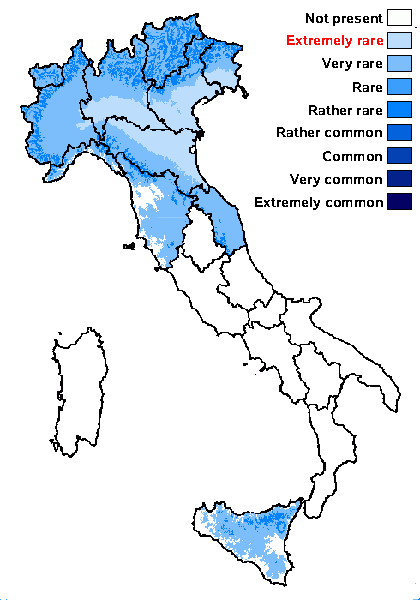
Predictive model
Herbarium samples
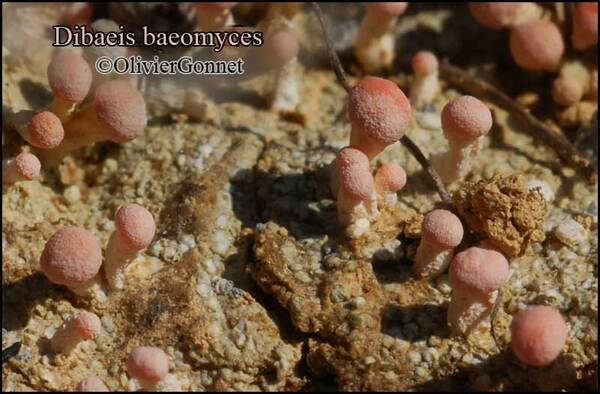
Courtesy Danièle et Olivier Gonnet - Source: https://www.afl-lichenologie.fr/Photos_AFL/Photos_AFL_D/Dibaeis_baeomyces.htm
France, Haute-Savoie 2010
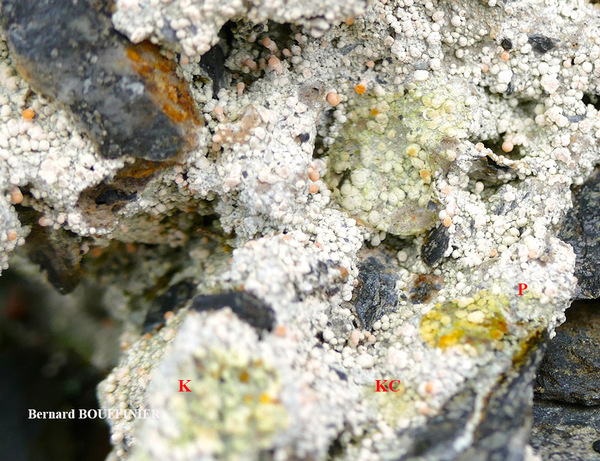
Bernard Bouffinier - Source: http://www.lichensmaritimes.org/index.php?task=fiche&lichen=288&lang=en
France, Commana

Bernard Bouffinier - Source: http://www.lichensmaritimes.org/index.php?task=fiche&lichen=288&lang=en
France, Commana
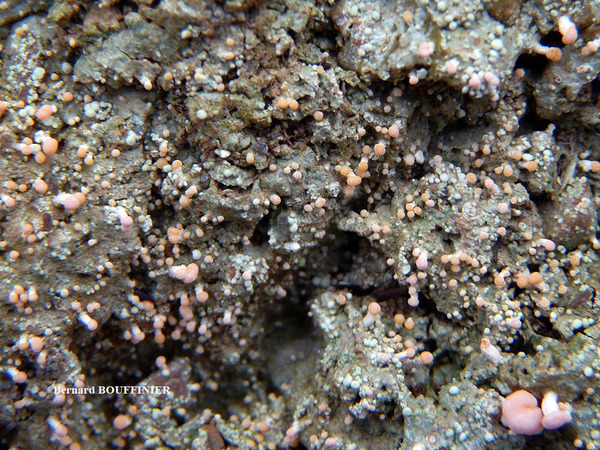
Bernard Bouffinier - Source: http://www.lichensmaritimes.org/index.php?task=fiche&lichen=288&lang=en
France, Cranou
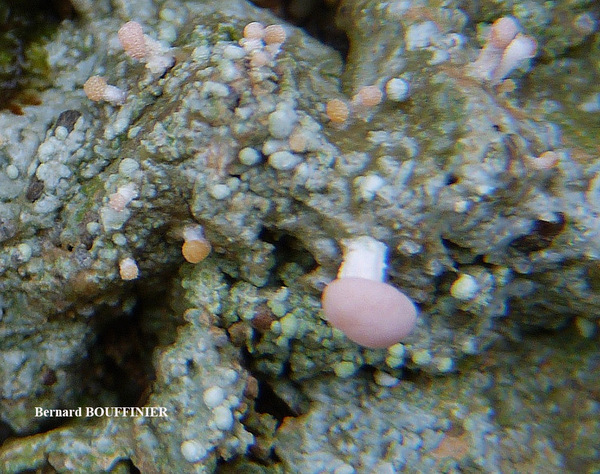
Bernard Bouffinier - Source: http://www.lichensmaritimes.org/index.php?task=fiche&lichen=288&lang=en
France, Cranou
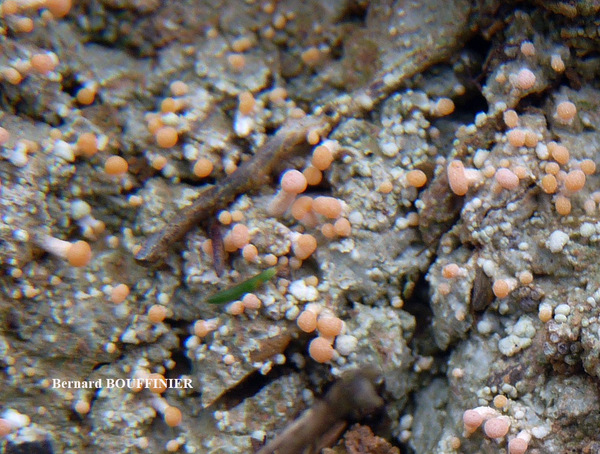
Bernard Bouffinier - Source: http://www.lichensmaritimes.org/index.php?task=fiche&lichen=288&lang=en
France, Cranou
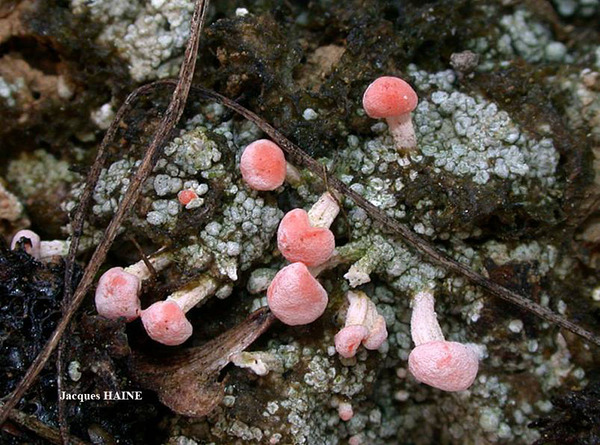
Jacques Haine - Source: http://www.lichensmaritimes.org/index.php?task=fiche&lichen=288&lang=en
France, Rocroi

Jacques Haine - Source: http://www.lichensmaritimes.org/index.php?task=fiche&lichen=288&lang=en
France, Rocroi
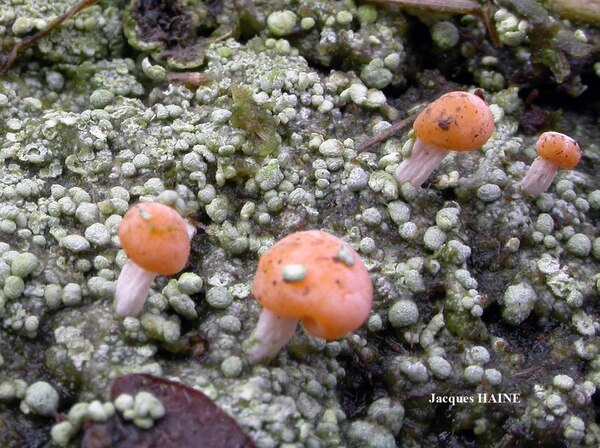
Jacques Haine - Source: http://www.lichensmaritimes.org/index.php?task=fiche&lichen=288&lang=en
France, Rocroi
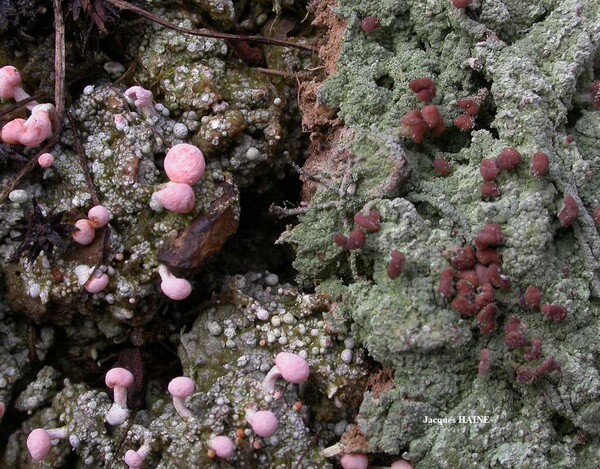
Jacques Haine - Source: http://www.lichensmaritimes.org/index.php?task=fiche&lichen=288&lang=en
France, Rocroi
with Baeomyces rufus (right)

Bernard Bouffinier - Source: http://www.lichensmaritimes.org/index.php?task=fiche&lichen=971&lang=en
France, Kergonan
sterile form
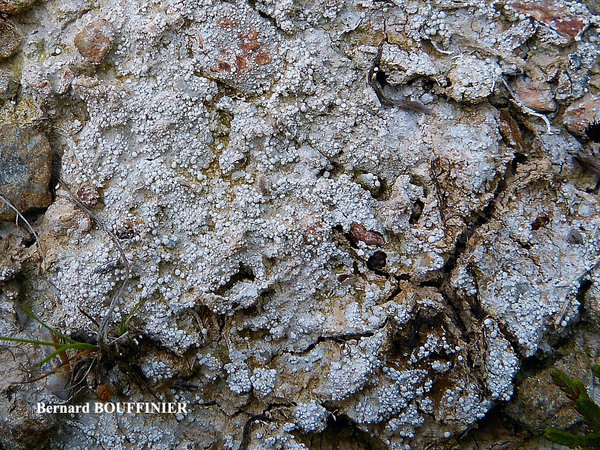
Bernard Bouffinier - Source: http://www.lichensmaritimes.org/index.php?task=fiche&lichen=971&lang=en
France, Bodvarec
sterile form
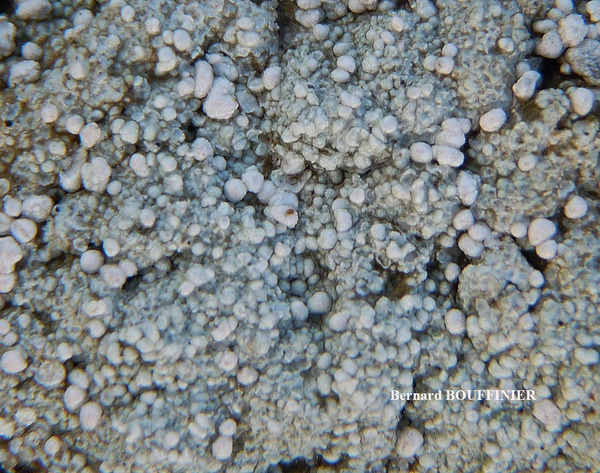
Bernard Bouffinier - Source: http://www.lichensmaritimes.org/index.php?task=fiche&lichen=971&lang=en
France, Pointe de Dinan
sterile form
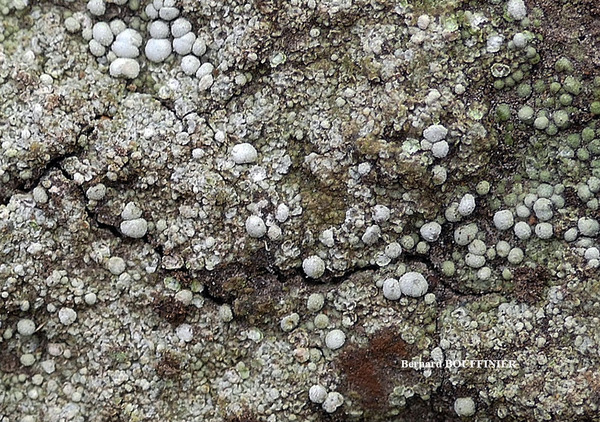
Bernard Bouffinier - Source: http://www.lichensmaritimes.org/index.php?task=fiche&lichen=971&lang=en
France, Roscanvel
sterile form
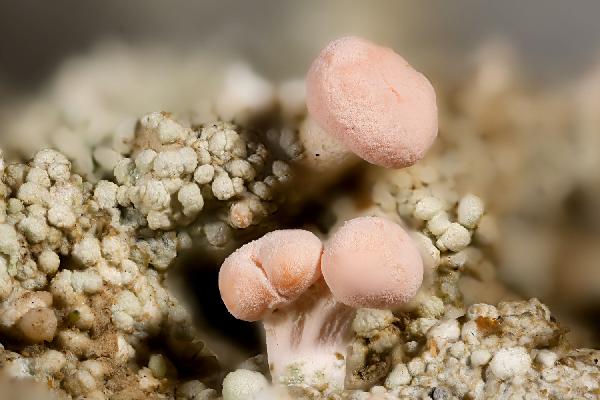
Ulrich Kirschbaum CC BY-SA 4.0 - Source: https://www.thm.de/lse/ulrich-kirschbaum/flechtenbilder
Central Europe; Germany; Bavaria: Alps.
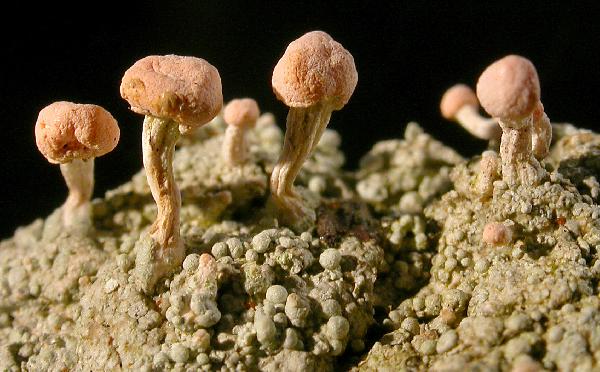
Ulrich Kirschbaum CC BY-SA 4.0 - Source: https://www.thm.de/lse/ulrich-kirschbaum/flechtenbilder
Central Europe; Germany: Hesse.
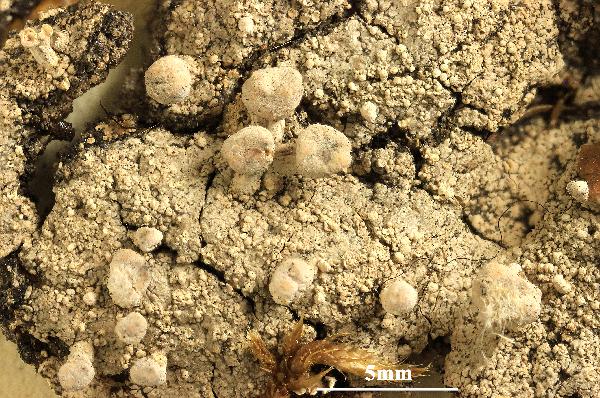

Felix Schumm - CC BY 4.0
[84], Germany, Baden-Württemberg, Rems-Murr-Kreis, Stetten an der
Rems, Wegböschung im Wald zwischen Calluna, TK:7222. Leg. E.
Putzler, 17.05.1949, det. E. Putzler. -Thallus P+ gelb, K-; Apothecien
K-.
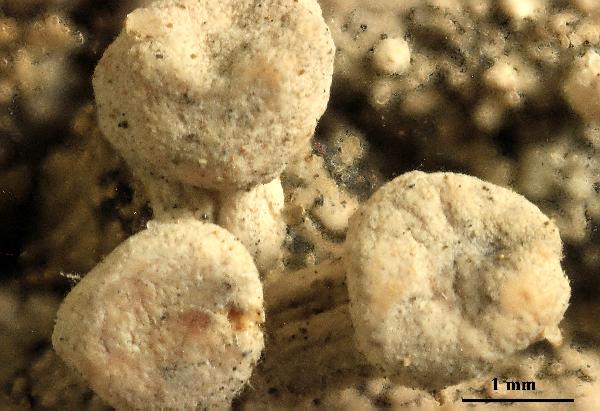

Felix Schumm - CC BY 4.0
[84], Germany, Baden-Württemberg, Rems-Murr-Kreis, Stetten an der
Rems, Wegböschung im Wald zwischen Calluna, TK:7222. Leg. E.
Putzler, 17.05.1949, det. E. Putzler. -Thallus P+ gelb, K-; Apothecien
K-.


Felix Schumm - CC BY 4.0
[85], Germany, Baden-Württemberg, Rems-Murr-Kreis, Stetten im
Remstal, Böschung eines Waldweges im Gemeindewald, TK: 7222.
Leg. Erich Putzler, 17.07.1948, det. J. Poelt. -
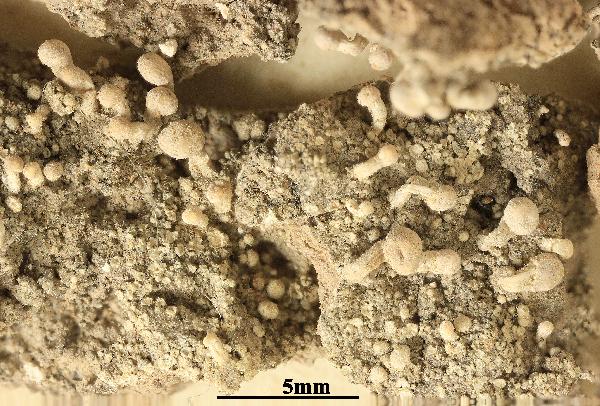

Felix Schumm - CC BY 4.0
[85], Germany, Baden-Württemberg, Rems-Murr-Kreis, Stetten im
Remstal, Böschung eines Waldweges im Gemeindewald, TK: 7222.
Leg. Erich Putzler, 17.07.1948, det. J. Poelt. -
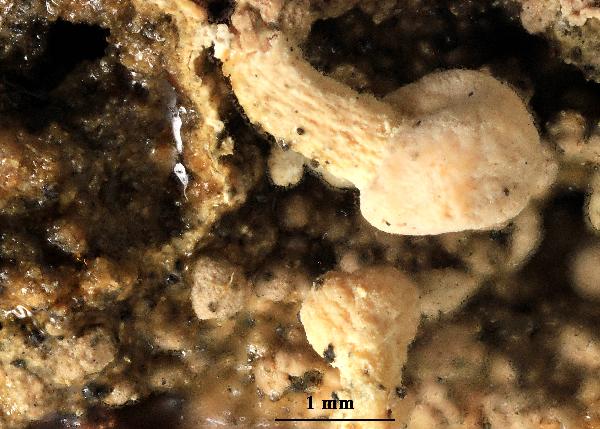

Felix Schumm - CC BY 4.0
[1991], Germany, Baden-Württemberg, Kreis Göppingen, Zell bei
Börtlingen, am Rand eines Waldweges im Waldteil "Ob dem See", ca
410 m, TK: 7223.leg. et det. F. Schumm
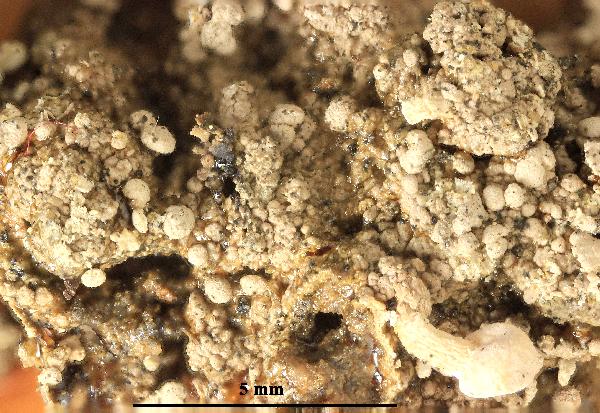

Felix Schumm - CC BY 4.0
[1991], Germany, Baden-Württemberg, Kreis Göppingen, Zell bei
Börtlingen, am Rand eines Waldweges im Waldteil "Ob dem See", ca
410 m, TK: 7223.leg. et det. F. Schumm
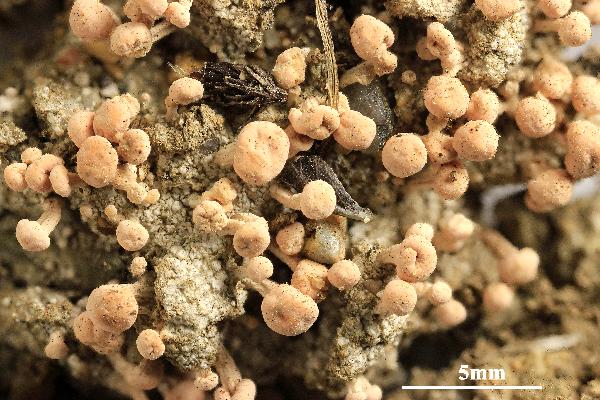

Felix Schumm - CC BY 4.0
[8865], USA, Maine, Washington Co.: an der Strasse Nr. 187 an der
Küste bei Jonesport, 44°33.979' N, 67°34.339, 20' W, sandiger Straßenrand.
Leg. F. Schumm, 21.08.2001, det. F. Schumm.
Thallus
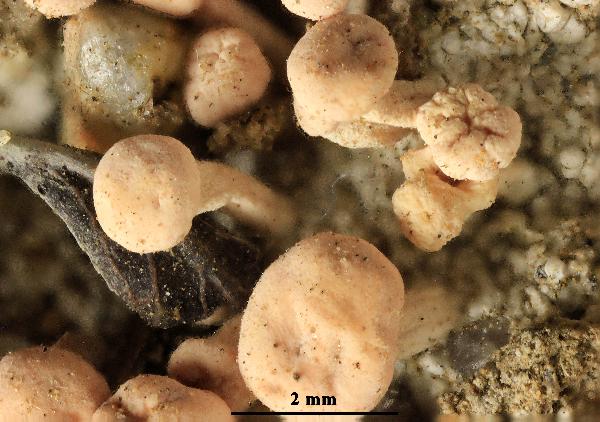

Felix Schumm - CC BY 4.0
[8865], USA, Maine, Washington Co.: an der Strasse Nr. 187 an der
Küste bei Jonesport, 44°33.979' N, 67°34.339, 20' W, sandiger Straßenrand.
Leg. F. Schumm, 21.08.2001, det. F. Schumm.
Thallus

Collezione lichenologica Abramo Massalongo del Museo di Storia Naturale G. Ligabue di Venezia - Autori: Seggi, Linda; Trabucco, Raffaella Proprietà: Fondazione Musei Civici di Venezia - CC BY-NC
Italy, Veneto, in nem. Montello
as Baeomyces roseus
Growth form: Crustose
Substrata: soil, terricolous mosses, and plant debris
Photobiont: green algae other than Trentepohlia
Reproductive strategy: mainly sexual
Pioneer species
Commonnes-rarity: (info)
Alpine belt: very rare
Subalpine belt: rare
Oromediterranean belt: very rare
Montane belt: rather rare
Submediterranean belt: very rare
Padanian area: extremely rare
Humid submediterranean belt: very rare
Humid mediterranean belt: absent
Dry mediterranean belt: absent

Predictive model
| Herbarium samples |

Courtesy Danièle et Olivier Gonnet - Source: https://www.afl-lichenologie.fr/Photos_AFL/Photos_AFL_D/Dibaeis_baeomyces.htm
France, Haute-Savoie 2010

Bernard Bouffinier - Source: http://www.lichensmaritimes.org/index.php?task=fiche&lichen=288&lang=en
France, Commana

Bernard Bouffinier - Source: http://www.lichensmaritimes.org/index.php?task=fiche&lichen=288&lang=en
France, Commana

Bernard Bouffinier - Source: http://www.lichensmaritimes.org/index.php?task=fiche&lichen=288&lang=en
France, Cranou

Bernard Bouffinier - Source: http://www.lichensmaritimes.org/index.php?task=fiche&lichen=288&lang=en
France, Cranou

Bernard Bouffinier - Source: http://www.lichensmaritimes.org/index.php?task=fiche&lichen=288&lang=en
France, Cranou

Jacques Haine - Source: http://www.lichensmaritimes.org/index.php?task=fiche&lichen=288&lang=en
France, Rocroi

Jacques Haine - Source: http://www.lichensmaritimes.org/index.php?task=fiche&lichen=288&lang=en
France, Rocroi

Jacques Haine - Source: http://www.lichensmaritimes.org/index.php?task=fiche&lichen=288&lang=en
France, Rocroi

Jacques Haine - Source: http://www.lichensmaritimes.org/index.php?task=fiche&lichen=288&lang=en
France, Rocroi
with Baeomyces rufus (right)

Bernard Bouffinier - Source: http://www.lichensmaritimes.org/index.php?task=fiche&lichen=971&lang=en
France, Kergonan
sterile form

Bernard Bouffinier - Source: http://www.lichensmaritimes.org/index.php?task=fiche&lichen=971&lang=en
France, Bodvarec
sterile form

Bernard Bouffinier - Source: http://www.lichensmaritimes.org/index.php?task=fiche&lichen=971&lang=en
France, Pointe de Dinan
sterile form

Bernard Bouffinier - Source: http://www.lichensmaritimes.org/index.php?task=fiche&lichen=971&lang=en
France, Roscanvel
sterile form

Ulrich Kirschbaum CC BY-SA 4.0 - Source: https://www.thm.de/lse/ulrich-kirschbaum/flechtenbilder
Central Europe; Germany; Bavaria: Alps.

Ulrich Kirschbaum CC BY-SA 4.0 - Source: https://www.thm.de/lse/ulrich-kirschbaum/flechtenbilder
Central Europe; Germany: Hesse.


Felix Schumm - CC BY 4.0
[84], Germany, Baden-Württemberg, Rems-Murr-Kreis, Stetten an der Rems, Wegböschung im Wald zwischen Calluna, TK:7222. Leg. E. Putzler, 17.05.1949, det. E. Putzler. -Thallus P+ gelb, K-; Apothecien K-.


Felix Schumm - CC BY 4.0
[84], Germany, Baden-Württemberg, Rems-Murr-Kreis, Stetten an der Rems, Wegböschung im Wald zwischen Calluna, TK:7222. Leg. E. Putzler, 17.05.1949, det. E. Putzler. -Thallus P+ gelb, K-; Apothecien K-.


Felix Schumm - CC BY 4.0
[85], Germany, Baden-Württemberg, Rems-Murr-Kreis, Stetten im Remstal, Böschung eines Waldweges im Gemeindewald, TK: 7222. Leg. Erich Putzler, 17.07.1948, det. J. Poelt. -


Felix Schumm - CC BY 4.0
[85], Germany, Baden-Württemberg, Rems-Murr-Kreis, Stetten im Remstal, Böschung eines Waldweges im Gemeindewald, TK: 7222. Leg. Erich Putzler, 17.07.1948, det. J. Poelt. -


Felix Schumm - CC BY 4.0
[1991], Germany, Baden-Württemberg, Kreis Göppingen, Zell bei Börtlingen, am Rand eines Waldweges im Waldteil "Ob dem See", ca 410 m, TK: 7223.leg. et det. F. Schumm


Felix Schumm - CC BY 4.0
[1991], Germany, Baden-Württemberg, Kreis Göppingen, Zell bei Börtlingen, am Rand eines Waldweges im Waldteil "Ob dem See", ca 410 m, TK: 7223.leg. et det. F. Schumm


Felix Schumm - CC BY 4.0
[8865], USA, Maine, Washington Co.: an der Strasse Nr. 187 an der Küste bei Jonesport, 44°33.979' N, 67°34.339, 20' W, sandiger Straßenrand. Leg. F. Schumm, 21.08.2001, det. F. Schumm. Thallus


Felix Schumm - CC BY 4.0
[8865], USA, Maine, Washington Co.: an der Strasse Nr. 187 an der Küste bei Jonesport, 44°33.979' N, 67°34.339, 20' W, sandiger Straßenrand. Leg. F. Schumm, 21.08.2001, det. F. Schumm. Thallus

 INDEX FUNGORUM
INDEX FUNGORUM
 GBIF
GBIF
 DOLICHENS
DOLICHENS
